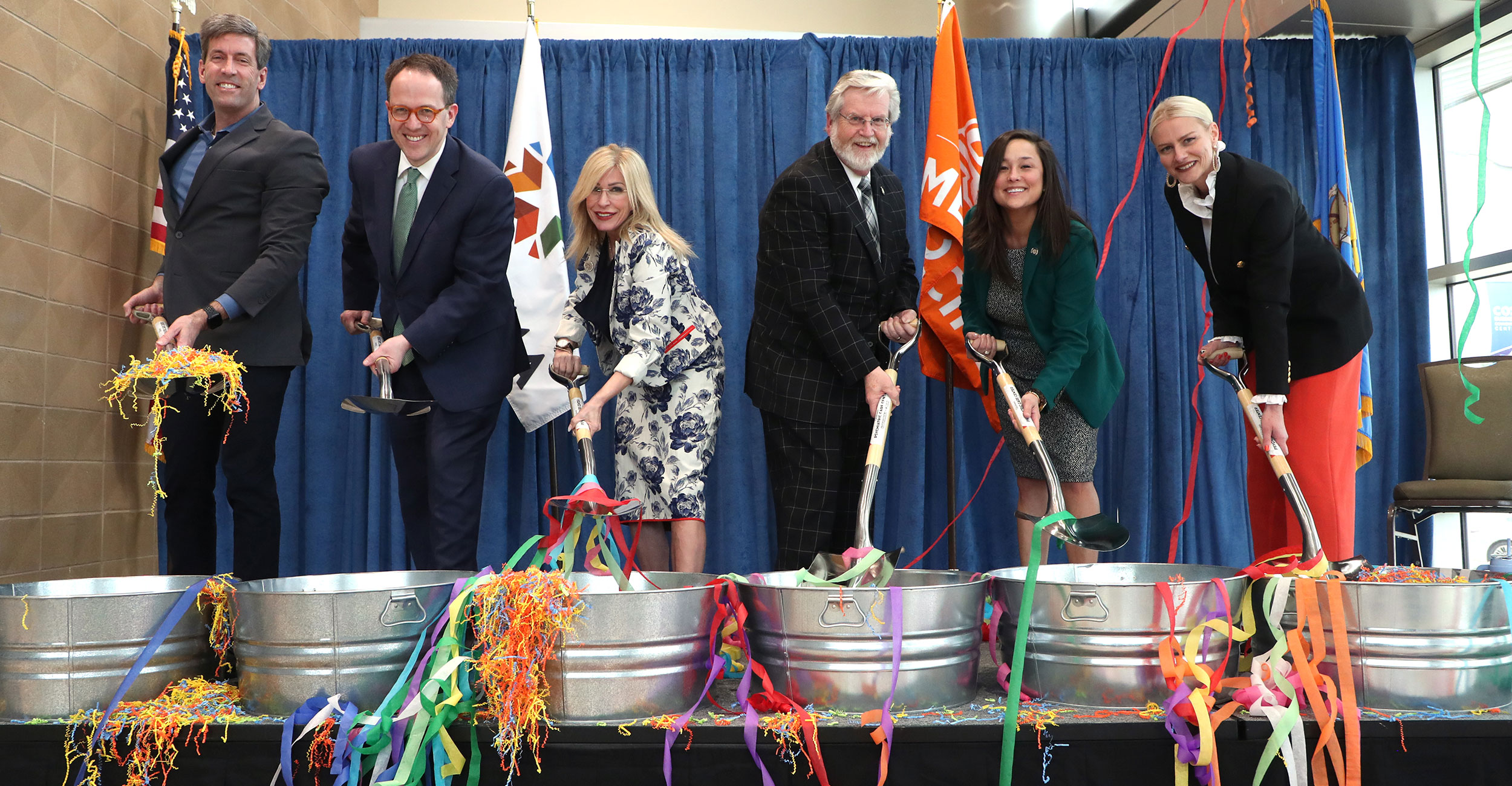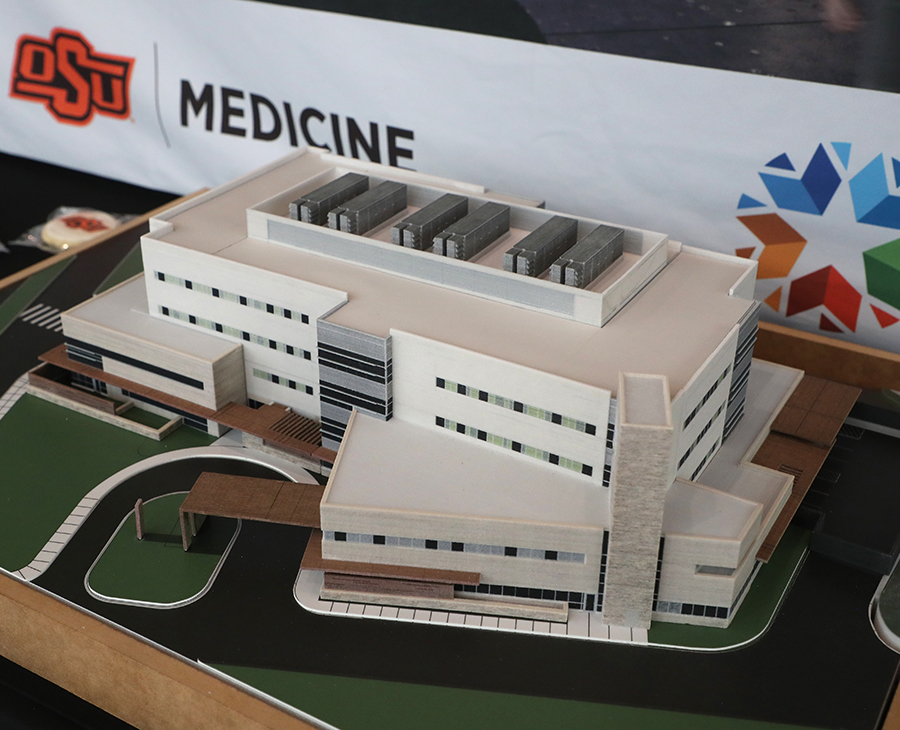
New Oklahoma Psychiatric Care Center breaks ground
Thursday, March 30, 2023
Media Contact: Sara Plummer | Communications Coordinator | 918-561-1282 | sara.plummer@okstate.edu
An unprecedented public-private partnership for better mental health was showcased Thursday at a ceremonial groundbreaking for the new Oklahoma Psychiatric Care Center in downtown Tulsa. The 106-bed hospital will replace the current Tulsa Center for Behavioral Health and will feature a 24-hour crisis response Urgent Recovery Center.
Projected to open in late 2024 or early 2025, the $70 million new center represents a partnership between the Oklahoma Department of Mental Health and Substance Abuse Services (ODMHSAS), Oklahoma State University Center for Health Sciences, the City and County of Tulsa as well as several philanthropic organizations led by the Anne and Henry Zarrow Foundation, said ODMHSAS Commissioner Carrie Slatton-Hodges.
“Today, we are recognizing one of the single largest investments in behavioral health ever made by Oklahoma lawmakers,” Slatton-Hodges said. “We are grateful that so many Oklahomans are beginning to recognize the value and importance of treating mental health issues, and that our legislators are leading the charge.”
"The new psychiatric hospital, located next to the OSU Medical Center, will expand
and deepen experiential learning of our medical students in Oklahoma.”
The facts surrounding mental health are grim. Approximately 140,000 residents in Tulsa and surrounding communities suffer from some sort of mental health challenge each year. Nearly 8% of children and youth in the greater Tulsa area have a serious emotional disturbance, according to ODMHSAS.
The 140,000-square-foot Psychiatric Care Center will be located in the OSU Academic Medical District in downtown Tulsa, next door to the new VA Hospital in Tulsa and the OSU Medical Center near the intersection of 3rd and Houston streets. Of the $70 million needed to construct the hospital, Oklahoma legislators provided $38 million in ARPA funding, while private donors and governmental partnerships covered the remaining costs, she said.
“The Oklahoma Psychiatric Care Center is a true public-private partnership, and the
best version of one. It will be a state-owned asset made better by private support
and strong local partnerships,” said Bill Major, executive director of the Zarrow
Family Foundations. “Mental health care is especially worth investing in to improve
the lives of Oklahomans and return people to wholeness. The new psychiatric hospital,
located next to the OSU Medical Center, will expand and deepen experiential learning
of our medical students in Oklahoma.”

OSU-CHS President Johnny Stephens said he and OSU President Kayse Shrum share the vision of the university being the undisputed leader in mental health services and patient care.
“OSU Medicine’s physicians, health care professionals, residents and medical students are eager to work with our partners at ODMHSAS to treat patients and make a difference in their lives through mental health services,” Dr. Stephens said. “Building strong partnerships has become a hallmark of OSU. We wouldn’t be here today, celebrating this milestone, without the dedication of so many people working toward the same goal — bringing care to those who need it most.”
The Oklahoma Psychiatric Care Center will nearly double the number of beds available to patients and is expected to add 100 new jobs in addition to 50 new residency spots for medical students. It will serve an estimated 1,000 or more additional patients a year, reducing mental health-related emergency department visits, incarcerations and homelessness.
“When people step into this building, they will be uplifted, not discouraged. We want to fill them with hope,” Slatton-Hodges said. “People need to know that behavioral health challenges, including substance use, can be treated just as successfully, if not more so, than other types of illnesses. This is not a secret, and this new hospital stands as a testament to that.”
